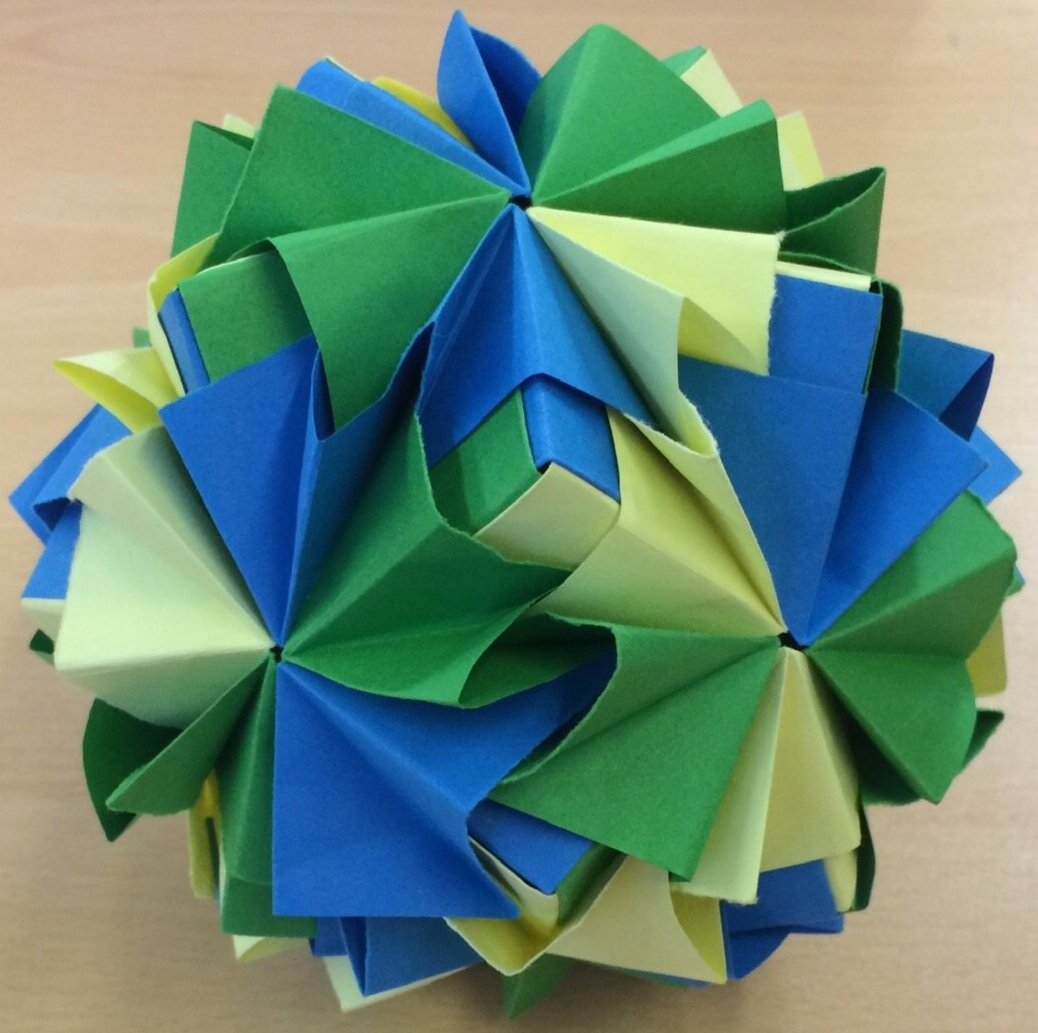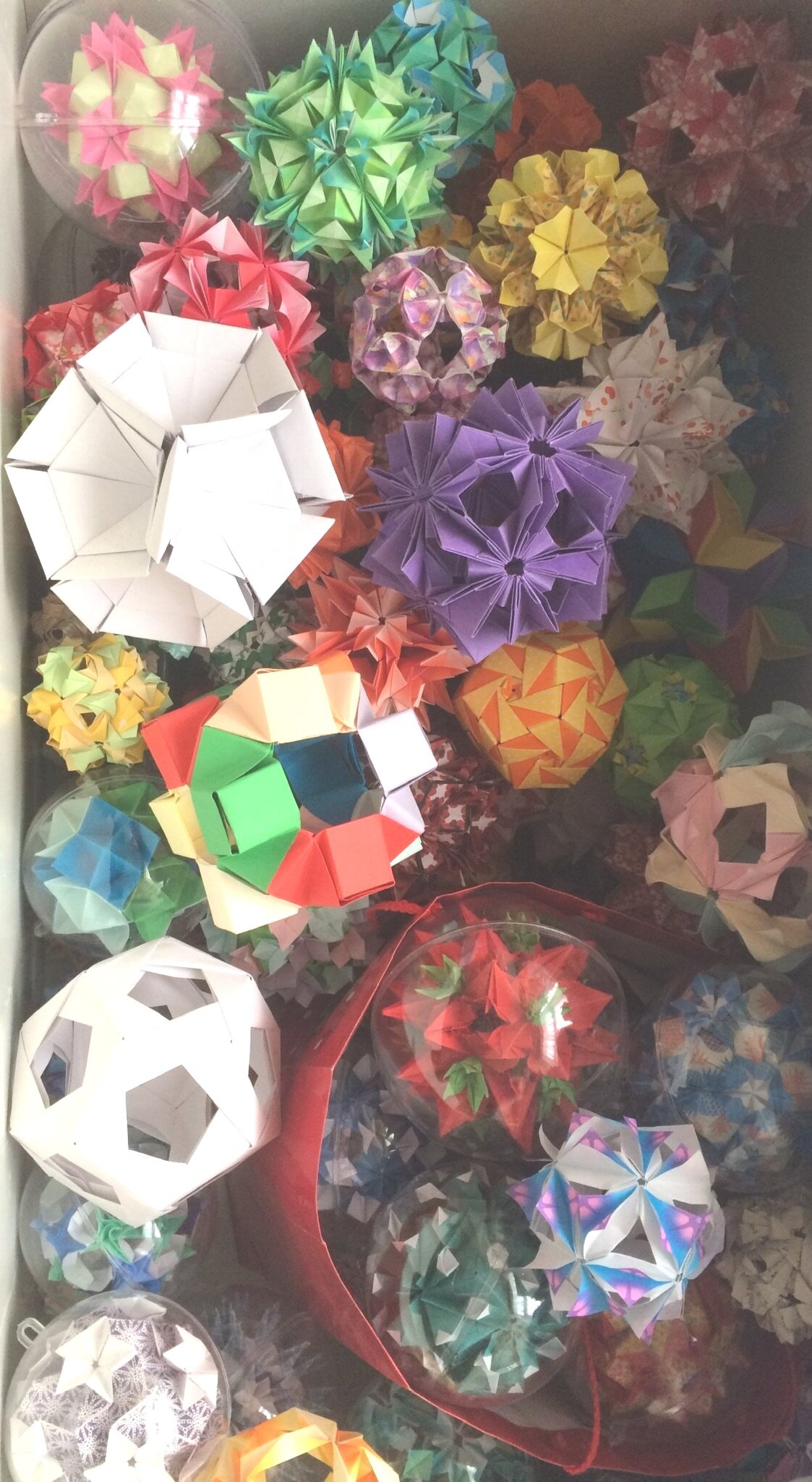The kusudama and me
I discovered the kusudama in February 2017, and fell in love. I have done origami of one form or another since I was 14, but when a fellow enthusiast challenged me to try a new form – something modular – I couldn’t resist. It wasn’t until I was several models in that I stopped to look at what the word ‘kusudama’ meant, and began to realise what a powerful thing this art form had become in my life.
Kusudama means ‘medicine ball’, an ancient Japanese symbol of healing and honour. Originally created by sewing together scented cherry blossoms, these balls would be gifted to honoured guests. Similar to the medieval pomander, they were believed to keep away sickness and promote health. I started folding them at a time of heightened anxiety, when I found it impossible to do my job without those tiny pieces of paper to keep me calm. Although I am not in that place anymore, the actions involved in creating kusudama still promote calm and wellbeing in me, and they are a constant part of my self-care routine.
Each element of the making process is important, from selecting the design and paper, to cutting the individual pieces and learning how to fold the shapes. Piece by piece, fragile and ever at risk of disintegration, the kusudama is made. They never fail to move me as they form, bringing order from tiny pieces, wholeness from something sliced apart. They somehow mimic much of the therapeutic journey, with tensions and new ways of fitting, containing vulnerability but also the capacity for stability.
Once the piece is complete, the last flap tucked in, the final petal curled, I hold it in my hand. I see more than I did in the original design, find new angles and interactions in the chosen papers. They are impossibly light for something that has consumed so many hours. Unbelievably whole, yet made from something fractured. Taking up a 3D space when once the pieces were flat and in boxes. Uniform, and yet to my eye each side showing something subtly different. In their preparation and creation they contain so much. They show me that beauty can come from brokenness, calm from anxiety, growth from dormancy.
My first kusudama: “Waltz Sonobe” by Maria Sinayskaya, February 2017
Some of my collection in storage, waiting to be displayed once I have permanent premises.

